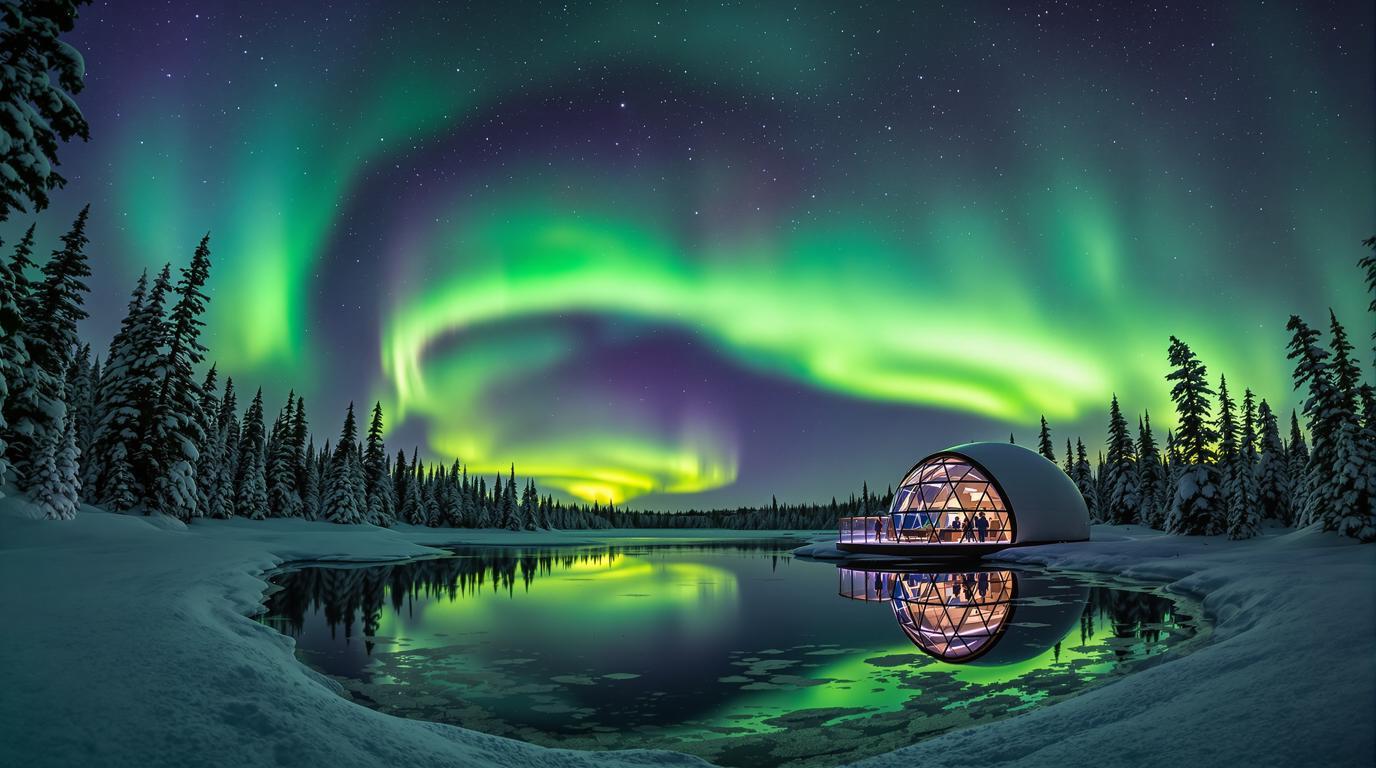The dancing lights of the Aurora Borealis have captivated travelers for centuries. This ethereal phenomenon, caused by solar particles colliding with Earth’s atmosphere, creates a spellbinding curtain of colors that transforms Arctic night skies into nature’s most spectacular light show. While pictures attempt to capture its magic, nothing compares to witnessing the Northern Lights firsthand.
The science behind the spectacle
The Aurora Borealis occurs when charged particles from solar winds interact with oxygen and nitrogen in our atmosphere. The result? Mesmerizing waves of green, pink, purple, and blue that seem to dance across the night sky. These displays are most visible near the magnetic poles, making destinations within the “auroral oval” prime viewing locations.
Nature’s most unpredictable performer
Perhaps the most thrilling aspect of aurora chasing is its unpredictability. Even in peak season (September through March), sightings are never guaranteed. This elusive quality has created a community of dedicated “aurora hunters” who track solar forecasts and chase clear skies with religious devotion. The reward for their persistence? A front-row seat to one of Earth’s most magical displays.
“The first time I saw the lights, I wept. It’s like watching the universe breathe,” shares Lars Eriksson, a veteran aurora guide in Swedish Lapland. “No matter how many times I’ve seen them, each display feels like witnessing a miracle.”
Prime aurora territory: The golden destinations
While the Greek islands offer their own celestial beauty, nothing compares to the Arctic Circle’s light shows. Tromsø, Norway stands as the “Gateway to the Arctic,” offering urban comforts alongside wilderness excursions. In Finnish Lapland, glass igloos provide the ultimate aurora-viewing accommodation – imagine watching cosmic light shows from your bed!
Fairbanks: America’s aurora capital
Americans needn’t travel overseas for premium aurora viewing. Fairbanks, Alaska sits directly under the auroral oval, offering some of the most reliable Northern Lights viewing on the planet. The city’s location, combined with consistently clear winter skies, creates perfect conditions for this celestial phenomenon. Just 25 miles north, Chena Hot Springs offers the magical experience of watching auroras while soaking in natural thermal pools.
Iceland’s volcanic landscapes: The perfect aurora backdrop
When the aurora appears over isolated, dramatic landscapes, the visual impact multiplies. Iceland’s otherworldly terrain of black sand beaches, massive waterfalls, and volcanic fields creates what many photographers consider the perfect aurora backdrop. The country’s Ring Road provides accessible viewing points away from light pollution.
“What makes Iceland special for aurora photography is the foreground,” explains Gunnar Freyr, an Icelandic aurora photographer. “Elsewhere you get the lights, but here they dance above landscapes that feel like another planet.”
The photographer’s challenge
Capturing the aurora requires specialized techniques. Professional photographers recommend cameras with manual settings, wide-angle lenses, and tripods. The lights move constantly, changing intensity and color, challenging even experienced photographers. However, like the floating mountains in Avatar, part of their beauty lies in their transformative nature.
Beyond the lights: Cultural immersion
Aurora destinations offer rich cultural experiences that complement the celestial show. In Sweden’s alpine paradise, visitors can experience Sami culture through reindeer sledding and traditional meals. Finland offers smoke saunas and ice fishing, while Kyoto’s preserved temples might seem worlds away, but northern cultures have equally fascinating preservation of ancient traditions.
The Aurora Borealis isn’t merely something to see—it’s something to experience with all senses. The absolute silence of Arctic wilderness, the crisp cold against your face, the anticipation as darkness falls, and finally, that magical moment when the first green wisps appear. For those fortunate enough to witness nature’s greatest light show, the experience often transcends the visual, becoming something deeply spiritual and profoundly moving.
